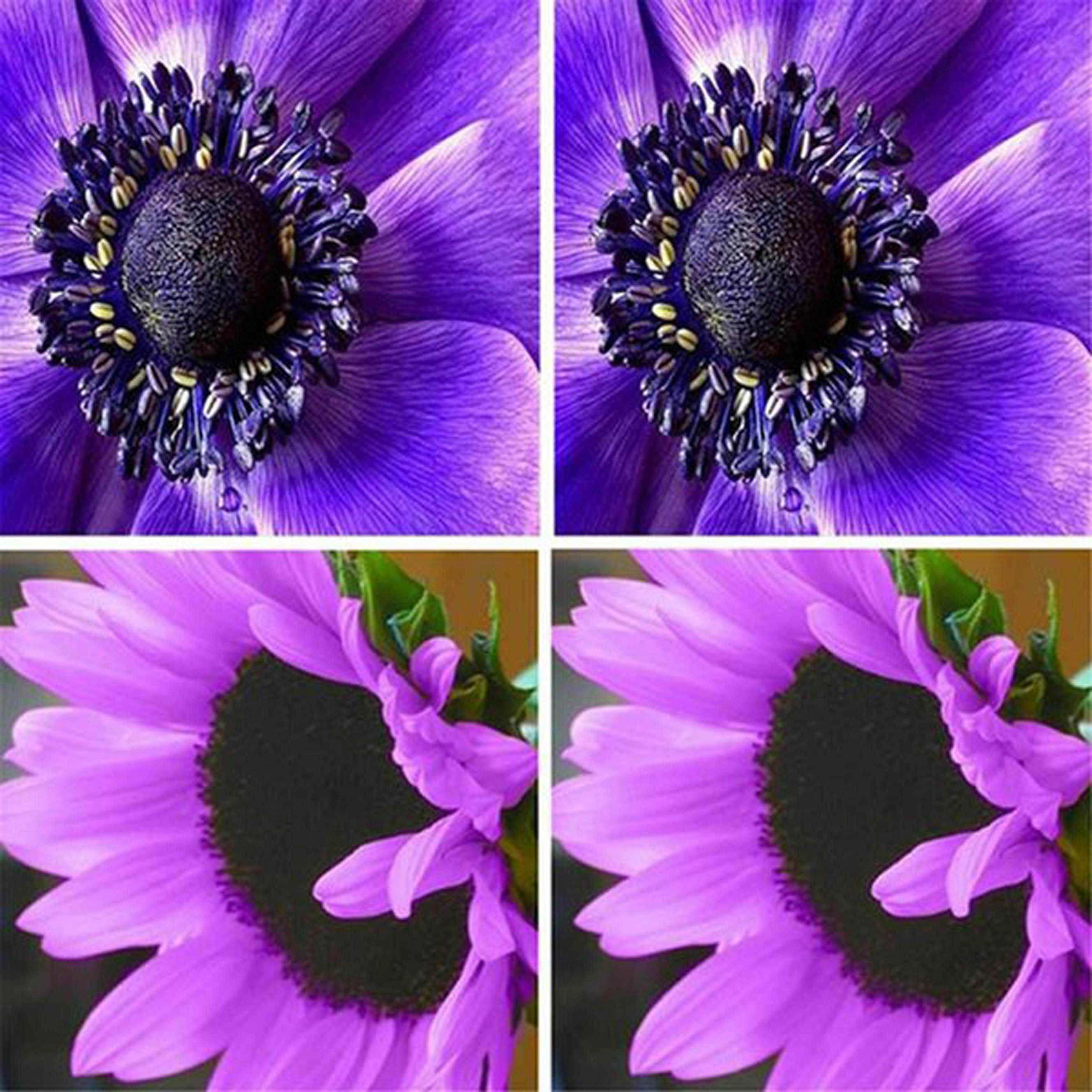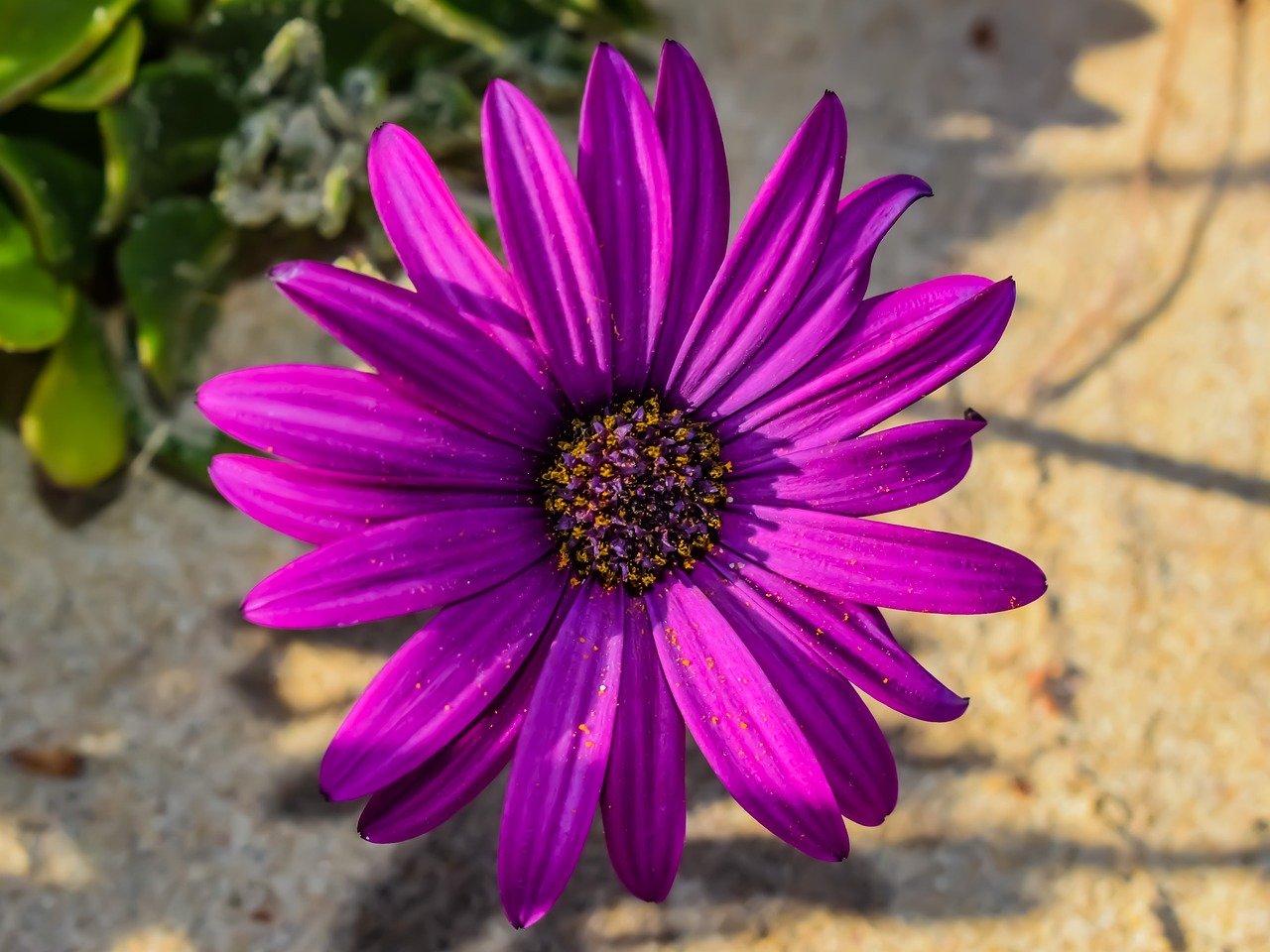Introduction
The big, bright yellow leaves that make up the sunflowers with purple have been a sign of happiness and love for a very long time. Farmer and flower fans all over the world love these plants because they can face the sun straight on. A unique and less well-known type of daisy that is getting a lot of attention from flower lovers and landowners is one with purple petals. Many fascinating topics are talked about in this article about purple sunflowers, such as their biological features, historical background, growing and caring for tips, pros, cons, and uses.
Things that plants have

Characteristics of plants
Things you should know about sunflowers
Sunflowers with purple or Helianthus annuus, are annual plants that are known for their big flower heads that look like daisies. They usually have a disc in the middle that is full of tiny flowers that turn into seeds and bright yellow ray flowers all around it. There are some types of these plants that can grow up to 12 feet tall or even higher.
Certain Things About Purple Sunflowers
Even though purple sunflowers look like regular sunflowers with purple in many ways, their brightly coloured petals make them stand out. The purple colour can be anything from a soft lavender to a deep, rich violet. It gives sunflowers a unique look. This colour difference is not only beautiful to look at, but it’s also caused by certain genetic factors.With its unique charm and beauty, the Night Queen tulip stands out as a flower that represents class and style in gardening and flower design. This beautiful flower always draws attention with its deep color and graceful shape, whether it’s in a yard or a bouquet.
-
By considering these pros and cons, farms may choose if they want to grow amethyst sunflowers and make sure they get the most out of the pros while also being ready for any problems that might arise.
Things in your genes that cause Purple Colouration 
- Sunflowers are purple because they have anthocyanins, which are pigments that give many plants their red, purple, and blue colours. Sunflowers with more of these pigments have been created through genetic variation and careful breeding, giving them their beautiful purple shades.
How Pretty Purple Sunflowers Are
Sunflowers with purple centres or petals look beautiful and different from the usual sunflower look. These bright flowers, which can be anything from deep maroon to violet, stand out against the normal golden-yellow flowers.
Features That Make It Unique
Purple sunflowers have all the great qualities of their yellow cousins, like strong growth and towering height (often up to 10 feet). Their purple colours, on the other hand, make them stand out and make them a unique addition to any yard. The purple colour can be in the petals, the disc in the middle, or both, based on the type.
Well-known types
There are different kinds of sunflowers that have purple tones. Here are some of the most important ones:
Chianti Hybrid: This variety is beautiful and easy to grow. Its petals are deep red, and the centre is dark. This sunflower, Moulin Rouge, has deep red-purple flowers and a dark centre that will make your garden look dramatic.
- Ms. Mars is a dwarf variety with dark purple petals that grows quickly and is great for small gardens or putting in pots.
Cultivating Purple Sunflowers

- Similar to regular sunflowers, growing sunflowers with purple needs the same care, but there are a few things to keep in mind to make sure they grow well and stay colourful.
- Planting AdvicePreparing the dirt: Sunflowers do best in pH-ranges between 6.0 and 7.5 dirt that drains efficiently. Increase the soil’s nutrients with organic waste to help plants grow.
Lighting: These plants need at least 6 to 8 hours of direct sunshine every day.
For best results, plant the seeds about 1 to 2 inches deep and 18 to 24 inches apart so they have room to grow.
-
Adding water and fertiliser
When you water, make sure the dirt is damp but not soaked. Deep watering should be done at least once a week, more often during dry times.
- For fertilisation, use a balanced, slow-release fertiliser when you put the seeds. Extra food during the growing season can help plants grow strong and produce bright flowers.
Caring for Purple Sunflowers
Adding water and fertiliser
When you water, make sure the dirt is damp but not soaked. Deep watering should be done at least once a week, more often during dry times.
- For fertilisation, use a balanced, slow-release fertiliser when you put the seeds. Extra food during the growing season can help plants grow strong and produce bright flowers.
- Pruning: Remove spent blooms to encourage continuous flowering and prevent the spread of disease.
- Support: Tall varieties may need staking to prevent them from toppling over, especially in windy conditions.
Incorporating Purple Sunflowers into Your Garden

-
Purple-colored sunflowers can be used in creative ways to make your garden look better.
Ideas for Design Mixed Borders: For a striking difference, plant purple sunflowers next to yellow or
- orange ones. Standalone Features: Make tall plants the centre of attention in your yard.
- Planters: Dwarf types, like Ms. Mars, can be grown in big pots to make patios and porches look more colourful.
Companion Planting
Purple sunflowers pair well with a variety of other plants, including:
Marigolds:Their bright orange and yellow flowers go well with the purple.
Lavender: Gives a garden a unified look and brings in helpful insects.
Coneflowers: The purple petals of these flowers can make a yard bed look nice and harmonious.
Harvesting and Uses of Purple SunflowersSunflowers, whether traditional yellow or the unique
sunflowers with purple hues, are not only beautiful but also practical. Here’s how to make the most of your purple sunflower harvest.
Harvesting Tips
Sunflowers purple

Colours can be collected for many reasons, such as making arrangements for decoration or collecting seeds.
How to do it:Sunflowers should be picked early in the morning, when the blooms are fully open but not yet past their best, for cutting into arrangements.
Cut cleanly about 12 to 18 inches below the flower head with a sharp knife or yard shears. To keep the roots fresh, put them in water as soon as you cut them.
To get the seeds, wait until the back of the flower head turns yellow-brown and the seeds are full but not too tight. To dry the seeds all the way, cut the head off and hang it upside down in a dry, well-ventilated place. When it’s dry, use your hands or a stiff brush to get rid of the seeds
Uses of Purple SunflowersSunflowers with purple
Colours can be used in many artistic and useful ways, such as:
Arrangements of Flowers: Purple sunflowers are a great choice for bouquets and centrepieces because of their bright colour. Flower groups like lilies, roses, and daisies look great with them.
For arts and crafts, dried sunflower heads can be used to make wreaths, garlands, and other projects that are meant to look nice.
Sunflower seeds are a healthy snack that can also be used to fill bird feeders. The purple sunflower seeds give these items a unique look
.The Charm of Purple SunflowersSunflowers with purple petals or centers add a stunning and unexpected twist to the traditional sunflower look. These vibrant flowers can range from deep maroon to violet, creating a striking contrast against the usual golden-yellow blooms.
Unique Characteristics
In what ways do purple sunflowers look good?

Lots of great things about purple sunflowers make them a great choice for farmers and flower lovers. Here are some of the best things about it:
Unique Looks Good to the Eye
Colours That Stand Out: The bright sunflowers with purple make flower arrangements and gardening more fun, and they are different from the normal yellow sunflower petals. Difference in Colour: Sunflowers that are purple look beautiful next to orange and yellow flowers. In general, this makes the yard look better.
Good for the environment
Pollinator Attraction: These sunflowers bring in bees, butterflies, and other good bugs that help other plants in the yard get pollinated. Support for Wildlife: The seeds and flowers give birds and small mammals food and a place to live, which adds to the variety of life in the area.
Being flexible
Floral Arrangements: sunflowers with purple are great for making bouquets and centrepieces that are both unique and beautiful. They add a touch of luxury and fun to flower arrangements. Crafts: You can use dried sunflower heads and flowers to make wreaths, garlands, and other crafts and decorations.
Worth for the Community and Schools

Classroom Use: These sunflowers are great for school grounds and lessons because they let kids do hands-on tasks that teach them about plant life and ecology.
Community Engagement:People can gather around them in community gardens, which can bring people in and get them interested in growing things.
Related Searches for Sunflowers Purple
When exploring the world of sunflowers with purple hues, people often search for related topics and products that enhance their gardening and floral experiences. Here are some popular related searches:
Purple Sunflower Bouquet

Creating a purple sunflower bouquet is a fantastic way to showcase these unique flowers. Their vibrant purple tones make stunning centerpieces and add a touch of elegance to any floral arrangement. These bouquets are perfect for special occasions or as a striking home decor element.
Sunflowers Purple Seeds
Sunflowers purple seeds offer an intriguing twist on traditional sunflowers with purple varieties. These seeds can produce flowers with beautiful purple hues, adding diversity to your garden. Gardeners often seek out these seeds to grow unique and eye-catching sunflowers.
Sunflowers Purple for Sale
Many gardeners look for sunflowers with purple for sale to add to their plant collections. Whether searching online or at local nurseries, finding these special sunflowers can enhance the aesthetic appeal of any garden.
Sunflower and Purple Wedding Bouquet
A sunflower and purple wedding bouquet combines the rustic charm of sunflowers with the regal elegance of purple flowers. This combination is perfect for weddings, offering a beautiful and unique floral arrangement that stands out on the big day.
Purple Flowers:Garden enthusiasts often search for purple flowers to complement their sunflowers. Adding various purple flowers, such as lavender, violets, or lilacs, can create a cohesive and visually appealing garden bed.
Pink Sunflower

Gardeners also look for interesting kinds of sunflowers that are pink. They look pretty and delicate in the yard because their petals are soft pink. You can plant them next to purple-colored sunflowers to make a more interesting and colourful show.
In conclusion
Going into the world of purple sunflowers with purple gives up a lot of options for gardeners who want to make their outdoor spaces more interesting. If you take good care of them and plan your garden well, these beautiful flowers can become the showpiece of your yard, adding colour and interest all through the growing season.
FAQs
Questions People Often Ask About Sunflowers with Purple
What are sunflowers that are purple?
Purple sunflowers are a special type of the common sunflower (Helianthus annuus). Their petals are purple instead of the usual yellow colour because they have been carefully bred or genetically modified.
What’s the difference between purple sunflowers and yellow ones?
Besides the colour of their petals, purple sunflowers are a lot like yellow sunflowers in terms of being heliotropic, having tall stems, and having big flower heads.
In what kinds of weather can purple sunflowers grow?
Both yellow and purple sunflowers do best in warm, sunny places with dirt that doesn’t stay soggy. They do best in places where the summers are long, and once they’re established, they can handle some dryness.
What kind of dirt should I use to grow purple sunflowers?
They like dirt that drains well and has a pH level between 6.0 and 7.5. Adding organic matter to the soil can make it better and help it drain better, which leads to stronger growth.
When is the best time to plant purple sunflower seeds?
After the last spring frost, plant the seeds. For the best germination, make sure the dirt is at least 55°F (13°C).
How should I take care of purple sunflowers after I plant them?
It is very important to water the seeds often, especially during the sprouting period, and feed them with balanced fertiliser every so often. Make sure there is enough space between plants to let air flow and keep diseases away.
What are some widespread bugs that eat purple sunflowers?
Most of the time, aphids, sunflower moths, and leafcutter bees are bad bugs. Regular checks and natural pest control methods, like neem oil, can help get rid of these bugs.




